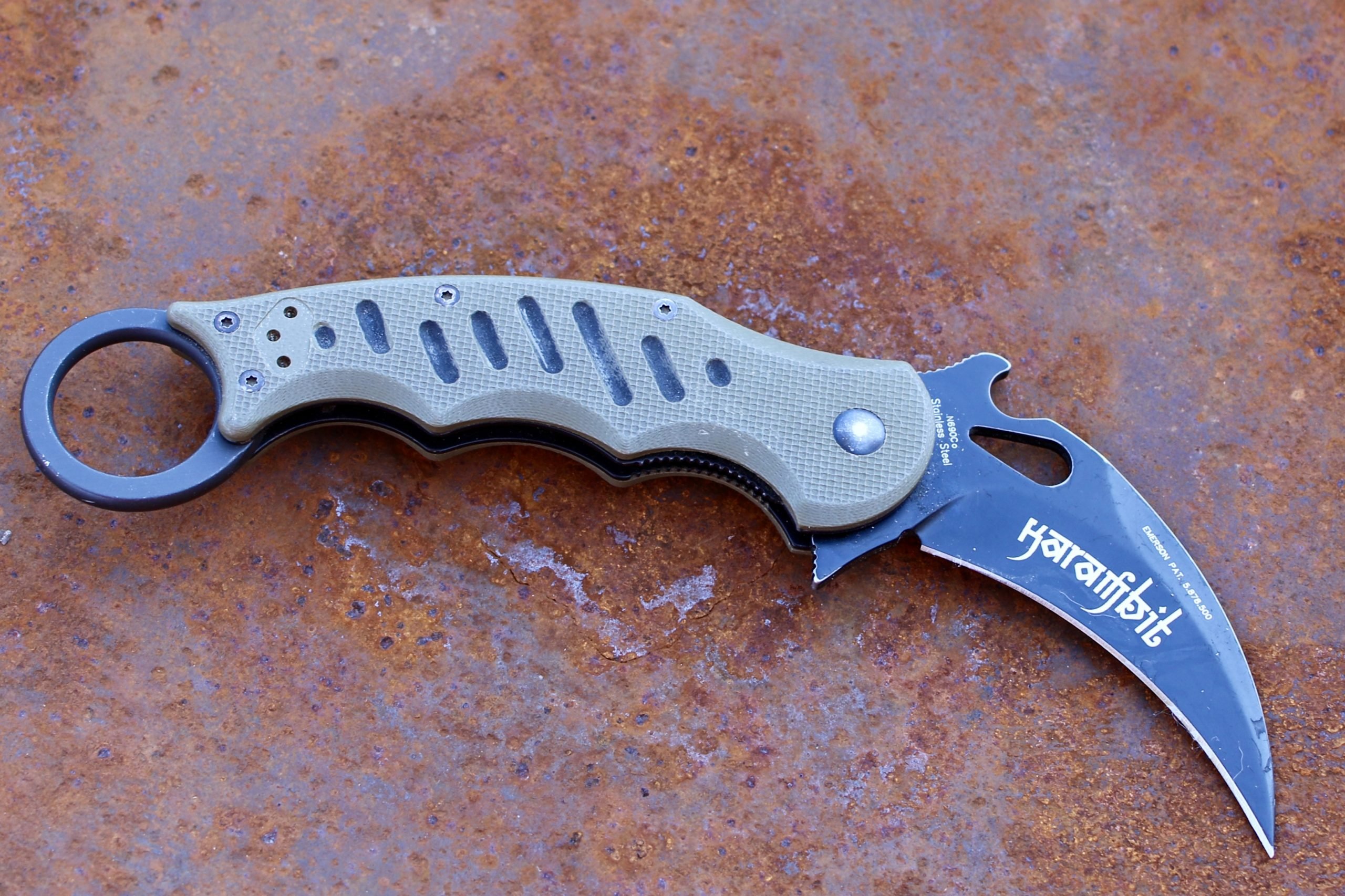Many of us—the type of people who carry handguns in the interest of defending ourselves and the ones we love—also carry knives. While some of the knives I carry regularly are decidedly utilitarian, some—like the Fox Folding Karambit—are not. This is a fighting knife, plain and simple, and undoubtedly the single most aggressive EDC knife I own.

The Fox Folding Karambit (479)
Blade Steel: N690Co stainless steel
Hardness: HRC 58-60
Blade Coating: black Idroglider
Handle: G10 black
Clip: stainless steel 420J2B – reversible
Back Ring: T6-6082 aircraft aluminum
Blade Length: 7.5 cm – 2.95″
Overall Length: 19 cm – 7.48″
Blade Thickness: 3 mm – 0.12″
Weight: 130 gr – 4.59 oz

Fox Knives
Fox began making knives about the same time George Lucas began making Star Wars films. The Italian company started small but quickly gained recognition for their quality.
Now Fox is known for its collaborations with a wide variety of famous designers to build a surprisingly wide and diverse selection of knives. Unlike some of the brands that have a defining aesthetic, Fox builds knives—like this Folding Karambit—that bear few branded hallmarks.

This was the first Fox that I’d bought. I’d seen their knives for years, and had been impressed with the quality. The Italian knife companies that we can readily access here in the states are all really robust and well built. The moment I saw this one, though, I ponied up. I really like the Karambit design, and this one scratches the fighting-knife-itch really well.
The Karambit, by Fox
To begin, the blade has a claw-shaped hook design and a wicked point. The back side of the blade has a false edge. The blade stock is thin, which works for the design.

The index finger ring is aluminum and built into the handle as a back spacer. While it doesn’t continue all the way up the spine, it extends far enough in to hold up to serious use. You can yank on the ring to deploy the knife without worrying about it being fragile in any way.

And it is meant to be yanked from a pocket. The blade is carried tip-up as the blade has an Emerson Wave cut into the top. If you’re not familiar with Emerson’s designs, you should check them out. They’re badass.
The wave catches on the seam of your pocket as you pull the knife out—if you are moving fast. Stick a finger in the ring, rip it up, and the knife will—almost simultaneously—snap open and fall into your open hand. The motion is fluid, easy to master, and insanely intimidating.

Carrying the Folding Karambit
I’ve been carrying this knife off-and-on for more than five years. Deployment with the Emerson Wave is actually faster than pulling and deploying an automatic. You pull the knife with one finger—not with a finger and a thumb—so it requires less manual dexterity. And you have to really be dramatic with the draw motion in order to ensure that it pops open.
As it leaves the pocket, the blade will lock in place with the liner lock. The liner is steel and has a pronounced curve up to the midpoint at the back of the blade. It holds the knife secure as it should, and is a logical lock-type for the design, though you will have to reposition the knife in order to get your thumb enough leverage to disengage it.

The hawk-bill shape of the blade is ideal for the tactical application that Karambits are known for, but they are harder to sharpen. I’ve found a round ceramic stone work well on the curved surface, but it requires far more concentration and patience than I typically give to knife sharpening.
Because of this, I tend to use this knife far less than others. I still carry it, but I’m hesitant to use it to open boxes or cut ropes or any of the other basic camp chores I frequently use pocket knives for. If you don’t use it for daily tasks, it won’t get dull.

I’m not advocating that you carry a knife you don’t intend to use. I look at this like I look at my EDC guns. I’ve been testing holsters for the P365 lately, so I’m carrying the little Sig. I like it well enough to trust my life to it. And I’ve put it through its paces, and continue to train with it, but it has its purpose.

Fox has designed and built a beast of a knife. Maybe it won’t be a go-to knife for basic utility, but it is a fantastic addition to an EDC toolkit.
There are several iterations of the design, too. If you want titanium liners or carbon fiber scales, or a different blade shape, or even one that’s built like an odd fighting rescue tool—a collaboration Fox created with Doug Marciada—there are options.

And Fox has trainers available for those who want to work with force-on-force techniques for training.
This version—Model 479—is their entry-level model. The going price right now is somewhere in the $125 neighborhood. I thought it was worth it five years ago, and—unlike many of the knives I’ve paid for over the years—I’ve never had one single moment of buyers remorse.


